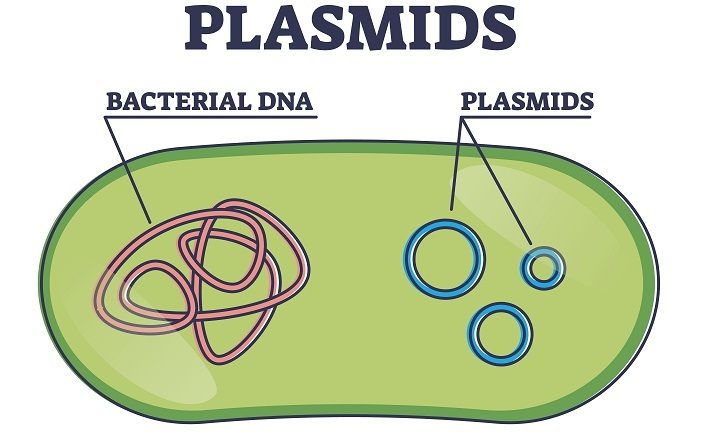
 Data Structure
Data Structure Networking
Networking RDBMS
RDBMS Operating System
Operating System Java
Java MS Excel
MS Excel iOS
iOS HTML
HTML CSS
CSS Android
Android Python
Python C Programming
C Programming C++
C++ C#
C# MongoDB
MongoDB MySQL
MySQL Javascript
Javascript PHP
PHP
- Selected Reading
- UPSC IAS Exams Notes
- Developer's Best Practices
- Questions and Answers
- Effective Resume Writing
- HR Interview Questions
- Computer Glossary
- Who is Who
What Are Mobile Genetic Elements?
Introduction
In prokaryotes, genetic material is transferred from parents to offspring by cell division like binary fission. This type of transmission via cell division is known as vertical transmission. Now there is another type of transmission called horizontal transmission that does not involve cell division, but the transfer of genetic material takes place with the help of three mechanisms namely transformation, transduction, and conjugation.
These three mechanisms take place with the help of certain DNA sequences that are capable of encoding proteins and enzymes and these sequences are known as mobile genetic elements. Not only in prokaryotes they are also found in humans in the form of transposons and retrotransposons.
Mobile Genetic Elements- An Overview
Mobile genetic elements can be defined as the segments of DNA that can move from one place to another or can be copied on a chromosome. They can be found in prokaryotes and eukaryotes and make the most part of the genome.
They are known to have a profound impact on the fitness of bacteria not only this they also help the organism to adapt to a new environment and in the production of distantly involved species by causing divergent evolution.
Mobile genetic elements were discovered by Barbara McClintock. She discovered these elements before DNA double helix and genetic code were explained. for her work in this field, she was awarded the Nobel Prize for Medicine in the year 1983.
Types of Mobile Genetic Elements
Different types of prokaryotes and eukaryotes' mobile genetic elements are as follows-
Plasmids
They are circular DNA molecules that replicate separately from the host chromosome. Naturally occurring bacterial plasmids range in size from 5000 to 400000 base pairs. They can be introduced into bacterial cells by a process called transformation. They are used as vectors in recombinant DNA technology.

Regardless of the approach, few cells actually take up the plasmid DNA, so a method is needed to select those that do. Generally, host cells require plasmids for growth under specific condition, such as gene that confers resistance to an antibiotic. They can also act like selectable marker as only cells transformed by the recombinant plasmid can grow in presence of antibiotic making any cell that contains the plasmid selectable under those growth conditions.
Bacteriophage
Bacteriophage has a very efficient mechanism for delivering its 48,502-base pair of DNA into a bacterium and it can be used as a vector to clone somewhat larger DNA segments. Bacteriophage vectors permit the cloning of DNA fragments of up to 23,000-base pairs.
Transposons
These are segments of DNA, found in virtually all cells, move or jump from one place on a chromosome to another on same or different chromosome. DNA sequence homology bis not usually required for this movement called as transposition, the new location is determined more or less randomly. Insertion of transposons in an essential gene could kill the cell, so transposition is very tightly regulated and usually very infrequent.
Transposons are perhaps the simplest of molecular parasites, adapted to passively replicate within the chromosomes of the host cell. In some cases, they carry genes that are useful to host cells and thus exist in a kind of symbiosis with the host.
Retrotransposons
Some well-characterized eukaryotic DNA transposons from sources as diverse as yeast and fruit flies have a structure very similar to that of retroviruses these are called retrotransposons. They encode an enzyme homologous to retroviral reverse transcriptase, and their coding regions are flanked by LTR sequences. They transpose from one position to the other in the cellular genome by means of RNA intermediate, using reverse transcriptase to make a DNA copy of RNA followed by integration of the DNA at the new site.
Viruses
They also act like mobile genetic elements. Generally, they are non-living outside the host but are living inside the host. When they infect the host organisms, they transfer the genes from one host to another and even organisms from two different species.
Functions of Mobile Genetic Elements
We have heard about antibiotic resistance that is developing in bacteria. This development of antibiotic resistance can be attributed to antibiotic resistance gene which have been found to be associated with mobile genetic element which enable them to spread this resistance to whole bacterial community.
Mobile genetic elements help bacteria by spreading certain virulence factors like exoenzyme and exotoxins.
In eukaryotes, they occupy a larger chunk of their genome, and they act as a driving force for shaping the genes and genomes of most organisms.
Mobile genetic elements like plasmids and bacteriophages can be used as tools in recombinant DNA technology and cloning procedures.
Conclusion
Much was known about mobile genetic elements even before the discovery of the double-helical structure of DNA and genetic code. Since they have the ability to replicate independently of cellular chromosomes, they can help in mediating inter or intracellular DNA trafficking. Mobile genetic elements, in addition to the core genes, carry several other genes which offer a selective advantage to the host cells.
Certain bacterial phenotypes which are of economic and medical importance are encoded by these mobile genetic elements. Horizontal gene transfer techniques and other associate processes provide enormous opportunities in the field of genomics.

